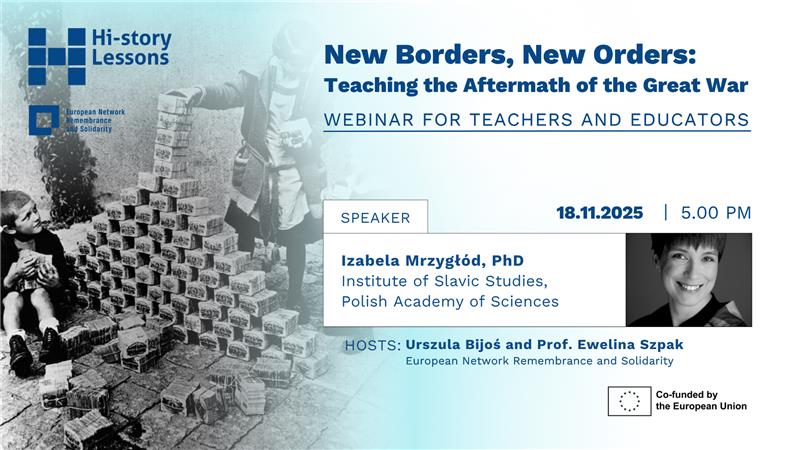How can we help students imagine a world where money loses its value overnight? You might begin with a story: Imagine returning home from school to find your father spreading piles of banknotes across the kitchen table — money that might be worthless by the next morning. In today’s world of contactless payments and online banking, such an image seems almost absurd — and that’s precisely what makes it a powerful teaching moment.
This webinar invites teachers to explore the aftermath of the First World War through children’s eyes, focusing on how young people experienced instability, scarcity, and social change. Izabela Mrzygłód PhD will present new educational resources — a selection of ego-documents, biographies, photographs, and works of literature from different countries — showing how children navigated the consequences of the war.
One of the exhibition’s creators, prof. Ewelina Szpak will showcase the ‘After the Great War. A New Europe 1918-1923’ online exhibition — a ready-to-use collection of maps, infographics, archival photographs, and personal testimonies.
This webinar offers inspiration for lessons marking the November anniversary of the end of the First World War. Participants will gain access to practical teaching materials and classroom strategies that connect the global consequences of the war to the everyday lives of children and families across Europe.
Date: 18 November, 5:00-6:30 pm
Izabela Mrzygłód PhD is a historian and editor; post-doc at the Institute of Slavic Studies of the Polish Academy of Sciences. She studied at the University of Warsaw and the University of Vienna. She has lectured at the University of Warsaw and the University of Wrocław. She has just published a book: “Universities in the Shadow of Crisis: The Nationalistic Radicalization of Students in Warsaw and Vienna in the Interwar Period.” Her research focuses on the social history of the first half of the 20^(th) century, particularly in Poland and Austria. She is fascinated by the people behind history, their identities, attitudes and choices, as well as the turbulent interwar period in Central Europe. She enjoys teaching and discussing with her students. She has a two-year-old daughter.
Fill the registartion form to participate



